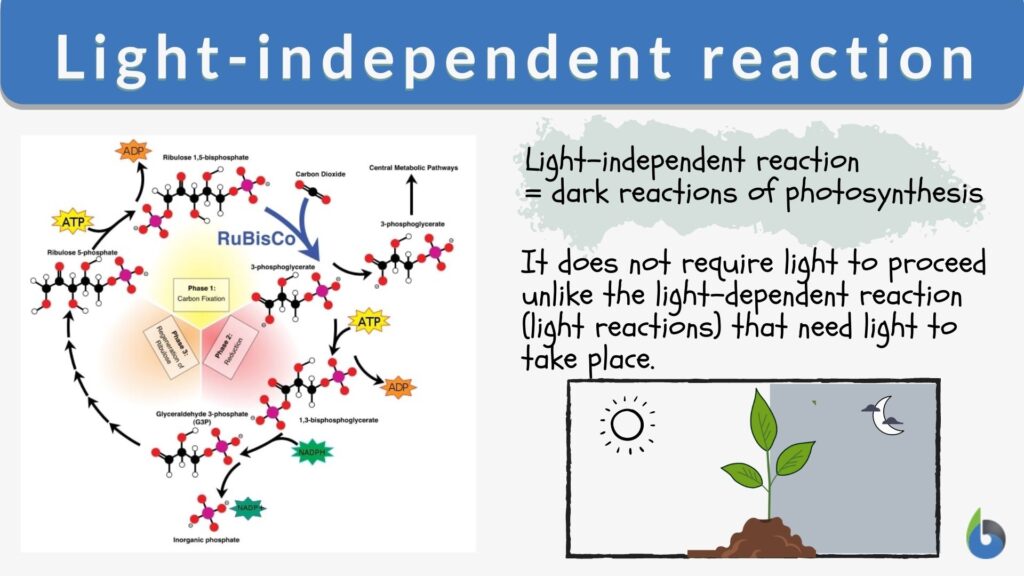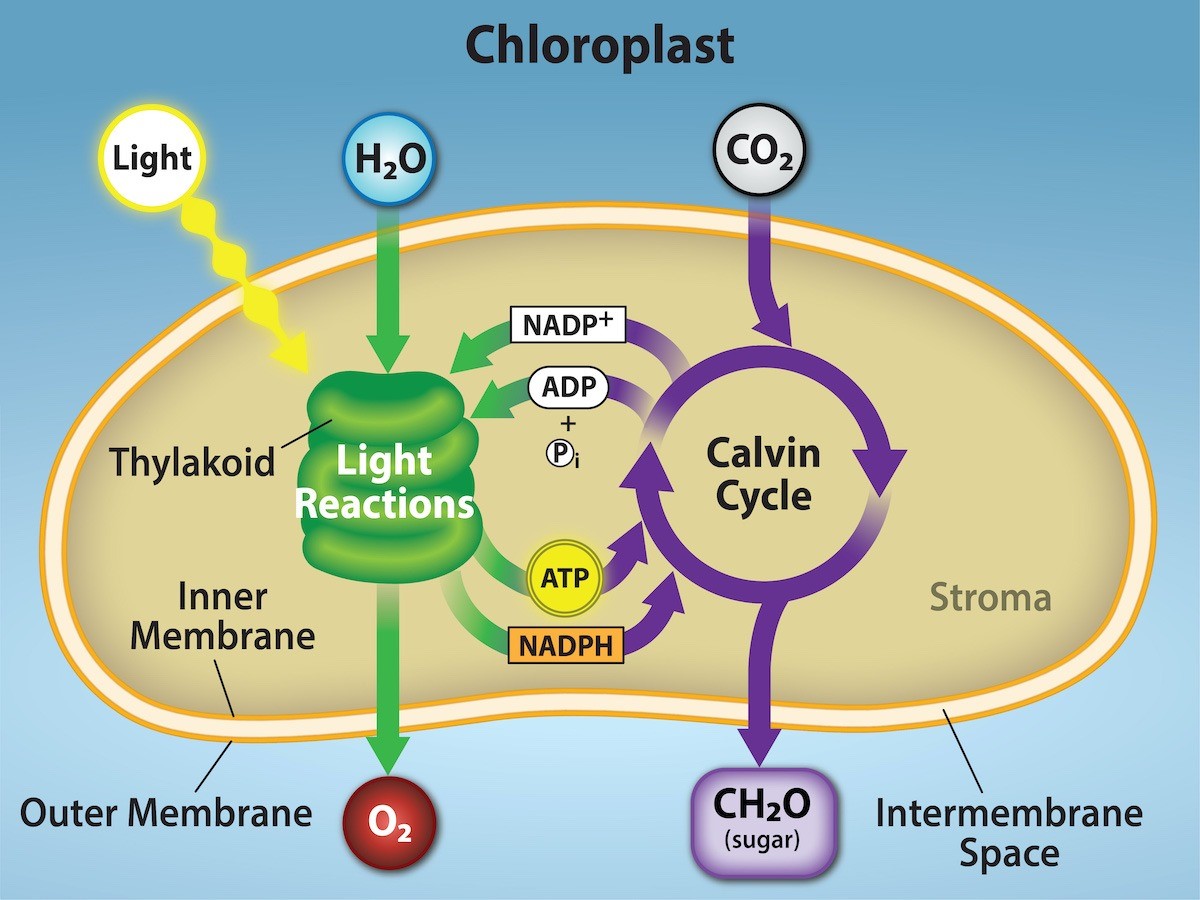Light-dependent reactions are a critical component of photosynthesis, occurring in the thylakoid membranes of chloroplasts. These reactions harness sunlight to produce energy-rich molecules that drive the process of converting carbon dioxide into glucose. Understanding where these reactions occur and their mechanisms is essential for anyone studying plant biology, ecology, or biochemistry.
Photosynthesis is one of the most vital biological processes on Earth, as it provides the foundation for nearly all life forms. The light-dependent reactions play a pivotal role in this process by capturing solar energy and converting it into chemical energy. This energy is stored in the form of ATP and NADPH, which are then utilized in the subsequent light-independent reactions (Calvin cycle).
In this article, we will delve into the intricacies of where light-dependent reactions occur, their mechanisms, and their significance in the broader context of photosynthesis. By the end of this article, you will have a comprehensive understanding of this fascinating process and its implications for life on Earth.
Read also:Dakota Mcculkin The Rising Star In The Entertainment Industry
Table of Contents
- Where Do Light-Dependent Reactions Occur?
- The Role of Chloroplasts in Photosynthesis
- Thylakoid Membranes: The Site of Light-Dependent Reactions
- Mechanisms of Light-Dependent Reactions
- Photosystems and Electron Transport Chain
- Products of Light-Dependent Reactions
- The Importance of Light-Dependent Reactions
- Variations in Photosynthetic Pathways
- Applications in Agriculture and Technology
- Conclusion
Where Do Light-Dependent Reactions Occur?
Light-dependent reactions occur within the thylakoid membranes of chloroplasts, which are specialized organelles found in plant cells, algae, and cyanobacteria. These reactions are directly powered by sunlight, which is absorbed by pigments such as chlorophyll. The energy derived from sunlight drives the production of ATP and NADPH, which are essential for the subsequent stages of photosynthesis.
The thylakoid membranes are stacked into structures called grana, which increase the surface area available for light absorption. This structural arrangement optimizes the efficiency of light-dependent reactions by maximizing the interaction between sunlight and the photosynthetic pigments embedded in the membranes.
Why Thylakoid Membranes Are Crucial
The thylakoid membranes are uniquely suited for hosting light-dependent reactions due to their specialized composition and structure. Key components of these membranes include:
- Photosystems I and II: These protein complexes capture light energy and initiate the electron transport chain.
- Cytochrome b6f Complex: This enzyme facilitates the transfer of electrons and contributes to the generation of a proton gradient.
- ATP Synthase: This enzyme uses the proton gradient to produce ATP, a vital energy carrier molecule.
The Role of Chloroplasts in Photosynthesis
Chloroplasts are the primary organelles responsible for photosynthesis in plants. These organelles contain chlorophyll and other pigments that absorb light energy. The chloroplasts are divided into three main regions: the outer membrane, the stroma, and the thylakoid system. Each of these regions plays a specific role in the photosynthetic process.
The thylakoid system, in particular, is the site of light-dependent reactions, while the stroma is where the Calvin cycle takes place. This division of labor ensures that the two stages of photosynthesis can occur simultaneously and efficiently.
Structure of Chloroplasts
The structure of chloroplasts is highly specialized to support photosynthesis:
Read also:Sonjas Exhusband Unveiling The Story Behind The Scenes
- Outer Membrane: Provides a protective barrier for the chloroplast.
- Inner Membrane: Regulates the movement of substances in and out of the chloroplast.
- Stroma: Contains enzymes and molecules necessary for the Calvin cycle.
- Thylakoid Membranes: Host the light-dependent reactions.
Thylakoid Membranes: The Site of Light-Dependent Reactions
Thylakoid membranes are the specific location within chloroplasts where light-dependent reactions occur. These membranes are rich in pigments, proteins, and enzymes that work together to capture light energy and convert it into chemical energy. The unique structure of thylakoid membranes allows them to efficiently perform this vital function.
Research has shown that the stacking of thylakoid membranes into grana increases the efficiency of light absorption. This arrangement maximizes the surface area exposed to sunlight, allowing more photons to be captured and utilized in the photosynthetic process.
Key Features of Thylakoid Membranes
The thylakoid membranes possess several key features that make them ideal for hosting light-dependent reactions:
- Photosystems: Protein complexes that absorb light energy and initiate the electron transport chain.
- Electron Transport Chain: A series of proteins and molecules that transfer electrons and generate a proton gradient.
- Proton Gradient: Used by ATP synthase to produce ATP.
Mechanisms of Light-Dependent Reactions
The light-dependent reactions involve a series of steps that convert light energy into chemical energy. These steps include:
- Light absorption by chlorophyll and other pigments.
- Excitation of electrons and their transfer through the electron transport chain.
- Generation of a proton gradient across the thylakoid membrane.
- Synthesis of ATP and NADPH using the energy derived from the proton gradient.
Each of these steps is facilitated by specific proteins and enzymes embedded in the thylakoid membranes. The efficiency of this process is a testament to the remarkable adaptability of biological systems.
Role of Chlorophyll in Light Absorption
Chlorophyll is the primary pigment responsible for absorbing light energy in the light-dependent reactions. It absorbs light most efficiently in the blue and red regions of the spectrum, while reflecting green light, which gives plants their characteristic color.
Photosystems and Electron Transport Chain
Photosystems I and II are two protein complexes that play a central role in the light-dependent reactions. These photosystems work together to capture light energy and initiate the electron transport chain.
Photosystem II absorbs light energy and uses it to excite electrons, which are then transferred to the electron transport chain. Photosystem I captures additional light energy to further excite the electrons, ensuring that they have sufficient energy to drive the production of NADPH.
Electron Transport Chain Components
The electron transport chain consists of several key components:
- Cytochrome b6f Complex: Facilitates the transfer of electrons and contributes to the proton gradient.
- Plastoquinone: A mobile electron carrier that shuttles electrons between photosystem II and the cytochrome b6f complex.
- Plastocyanin: Transfers electrons from the cytochrome b6f complex to photosystem I.
Products of Light-Dependent Reactions
The primary products of light-dependent reactions are ATP and NADPH. These molecules are essential for the subsequent stages of photosynthesis, as they provide the energy and reducing power needed to convert carbon dioxide into glucose.
ATP is produced through the process of photophosphorylation, which utilizes the proton gradient generated across the thylakoid membrane. NADPH is formed when electrons from the electron transport chain are transferred to NADP+.
Significance of ATP and NADPH
ATP and NADPH are crucial for the Calvin cycle, where carbon dioxide is fixed into organic molecules. The energy stored in ATP and the reducing power of NADPH drive the enzymatic reactions that synthesize glucose and other carbohydrates.
The Importance of Light-Dependent Reactions
Light-dependent reactions are vital for the survival of nearly all life forms on Earth. By capturing sunlight and converting it into chemical energy, these reactions form the basis of the food chain. Plants, algae, and cyanobacteria that perform photosynthesis provide oxygen and organic compounds that sustain other organisms.
In addition to their ecological importance, light-dependent reactions have significant implications for agriculture and renewable energy. Understanding these processes can lead to the development of more efficient crops and bioenergy technologies.
Ecological and Economic Implications
The ecological and economic significance of light-dependent reactions cannot be overstated:
- Food Production: Photosynthesis is the foundation of global food systems.
- Oxygen Generation: Plants release oxygen as a byproduct of photosynthesis, supporting aerobic life forms.
- Climate Regulation: Photosynthesis helps mitigate climate change by removing carbon dioxide from the atmosphere.
Variations in Photosynthetic Pathways
While the basic principles of light-dependent reactions are universal, there are variations in the photosynthetic pathways used by different organisms. For example, C3, C4, and CAM plants have evolved distinct strategies to optimize photosynthesis under varying environmental conditions.
C4 and CAM plants are particularly adapted to hot and arid environments, where water conservation is critical. These adaptations allow them to perform photosynthesis more efficiently under adverse conditions.
Comparison of Photosynthetic Pathways
The table below summarizes the key features of C3, C4, and CAM photosynthetic pathways:
| Pathway | Features | Advantages |
|---|---|---|
| C3 | Occurs in most plants | Efficient under mild conditions |
| C4 | Minimizes photorespiration | Adapted to hot, dry climates |
| CAM | Opens stomata at night | Conserves water in arid environments |
Applications in Agriculture and Technology
The principles of light-dependent reactions have inspired numerous applications in agriculture and technology. Researchers are exploring ways to enhance photosynthetic efficiency in crops, develop bioenergy technologies, and design artificial photosynthetic systems.
Advances in genetic engineering and synthetic biology have the potential to revolutionize agriculture by creating plants that can perform photosynthesis more efficiently. These innovations could lead to higher crop yields, improved resilience to climate change, and sustainable food production.
Emerging Technologies
Some of the emerging technologies inspired by light-dependent reactions include:
- Artificial Photosynthesis: Mimics natural photosynthesis to produce fuels and chemicals.
- Genetically Modified Crops: Enhances photosynthetic efficiency in plants.
- Solar Energy Conversion: Utilizes principles of light absorption and energy transfer.
Conclusion
Light-dependent reactions are a fascinating and essential component of photosynthesis, occurring within the thylakoid membranes of chloroplasts. These reactions capture sunlight and convert it into chemical energy, producing ATP and NADPH that drive the synthesis of glucose and other organic compounds.
Understanding where light-dependent reactions occur and their mechanisms is crucial for anyone studying plant biology, ecology, or biochemistry. This knowledge has far-reaching implications for agriculture, renewable energy, and climate change mitigation.
We invite you to share your thoughts and insights in the comments section below. If you found this article informative, please consider sharing it with others who may benefit from learning about the wonders of light-dependent reactions. For more articles on science and technology, explore our website and stay updated on the latest developments in these exciting fields.

![IMAT 2016 Q38 [LightDependent Reactions in Photosynthesis] Past](https://imat.entermedschool.com/uploads/default/original/1X/56445a77a47b06ed2141b417a0c59dae5dc7b9e7.jpeg)
